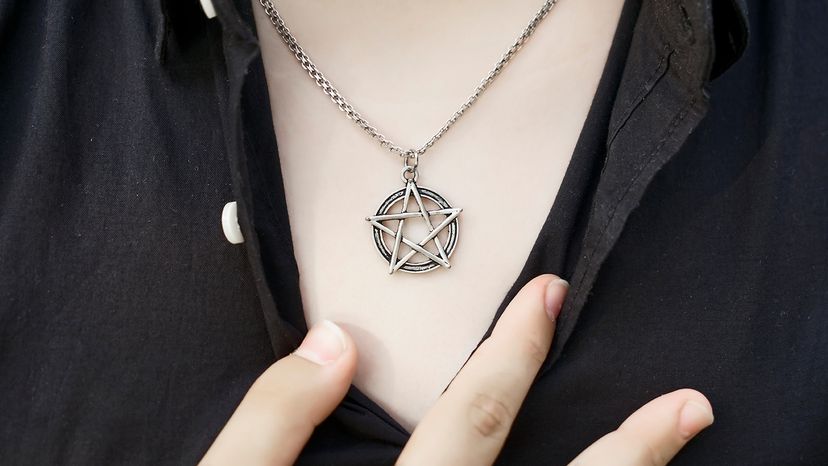While there is one traditional pentagram shape and orientation that comes to mind for many of us when we think of the symbol, there are actually a few different types, each with its own symbolic meaning.
1. Upright Pentagram
Recognized by its single upward-facing point, the upright pentagram symbolizes a host of positive attributes across various traditions. It represents the spirit's dominance over the four material elements — earth, air, fire and water — embodying protection, light and a deep connection to the divine.
Within Western spirituality, mysticism and occultism, this configuration is often linked to the right-hand path, emphasizing benevolent magic and living in harmony with the natural world. This orientation has historically served as a powerful ward against evil spirits, creating a protective barrier that balances spiritual and elemental forces.
In early Christianity, particularly during the Middle Ages, the same upright pentagram was employed to symbolize the five wounds of Christ, denoting sacrifice, salvation and divine safeguarding.
2. Inverted Pentagram
With two points facing upward, this form sometimes symbolizes the physical realm's dominance over the spiritual, often associated with the left-hand path, which includes more individualistic or self-serving practices.
The inverted pentagram has been embraced by certain groups as a satanic symbol, often seen as representing a materialistic perspective or the subversion of conventional Christian symbols.
This particular association with Satanism gained prominence in the 20th century and does not reflect the symbol's broader historical and cultural usage.
Conversely, the Church of Jesus Christ of Latter-day Saints incorporates the inverted pentagram into some of its early temples, representing the Morning Star, a symbol often associated with Jesus Christ.
This usage within LDS architectural and symbolic contexts highlights the inverted pentagram's broader role as a beacon of positivity, aligning with its historical Christian meanings while offering a unique perspective within the Latter-Day Saint tradition.
3. Tetragrammaton Pentagram
Éliphas Lévi, a pivotal figure in 19th-century French occultism, reinterpreted the pentagram, infusing it with deep esoteric significance. This five-pointed star, encased within a circle, symbolizes the blending of earthly elements with spiritual realms, showcasing the universe's interconnectedness.
Lévi adorned the symbol's perimeter with the Tetragrammaton, the covenantal name of God, enhancing its spiritual resonance.
Lévi incorporated Hebrew letters and alchemical symbols within this pentagram, including representations of "Adam" and "Eve," to highlight humanity's intrinsic connection to the cosmos. These elements collectively express the balance between human nature and the broader cosmic order.
4. Pentagram with Additional Symbols
Sometimes, pentagrams are combined with other esoteric symbols, such as the eye of providence, runes or planetary symbols, to tailor the star's energies for specific magical purposes or to invoke particular aspects of the divine or elemental forces.
Each pentagram serves different symbolic purposes and is used in various contexts, from ceremonial magic to personal talismans to religious beliefs.
